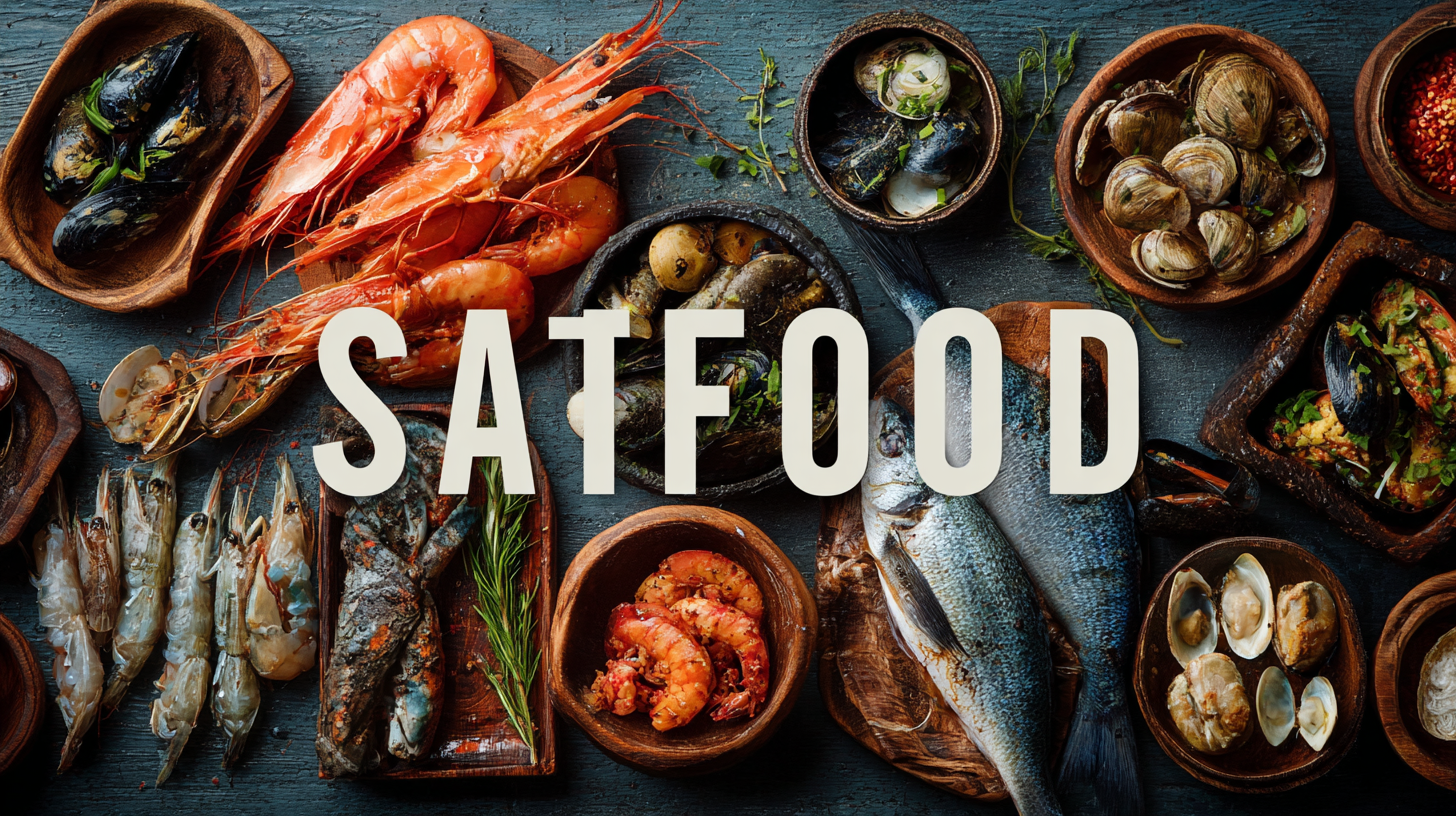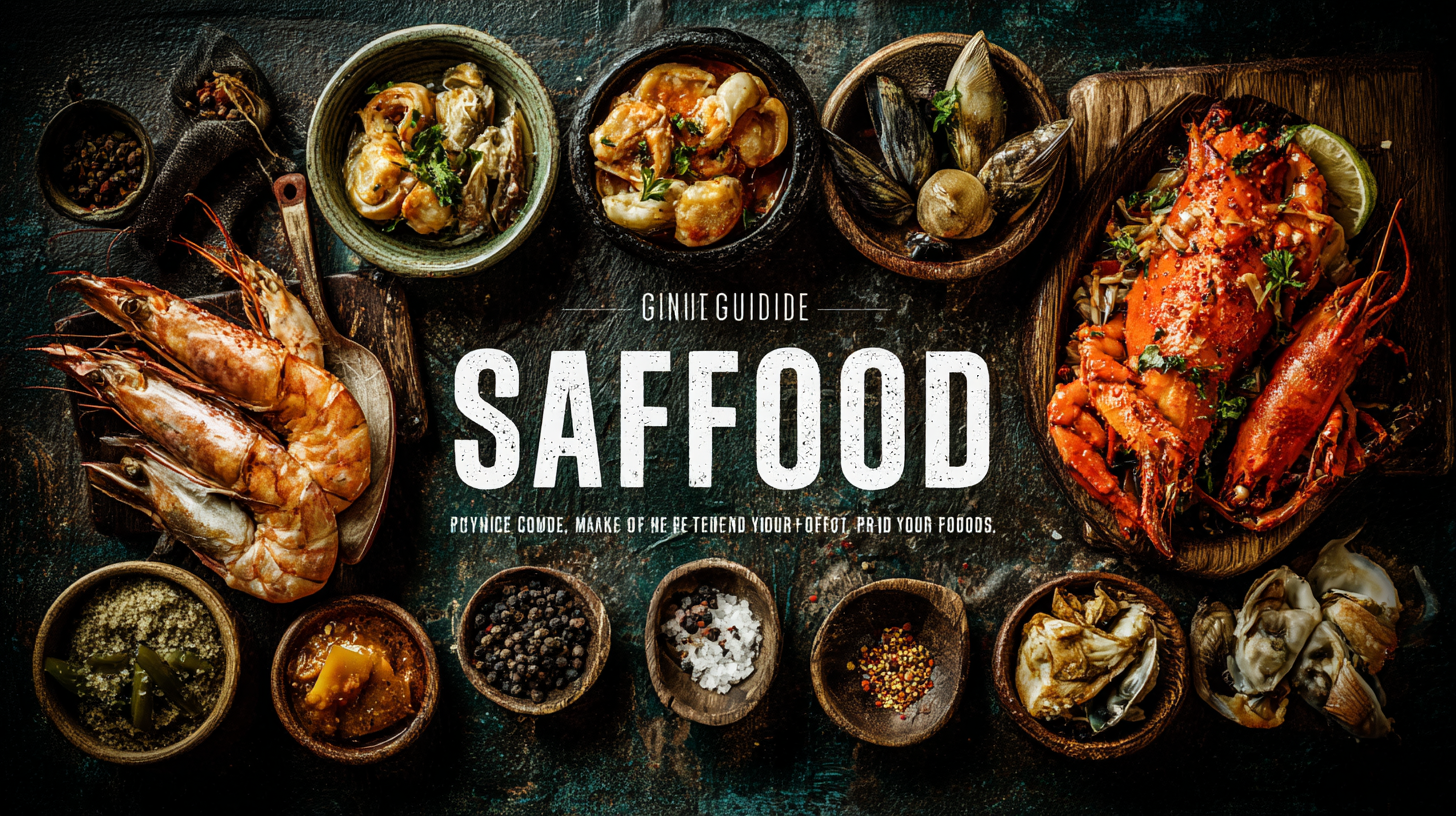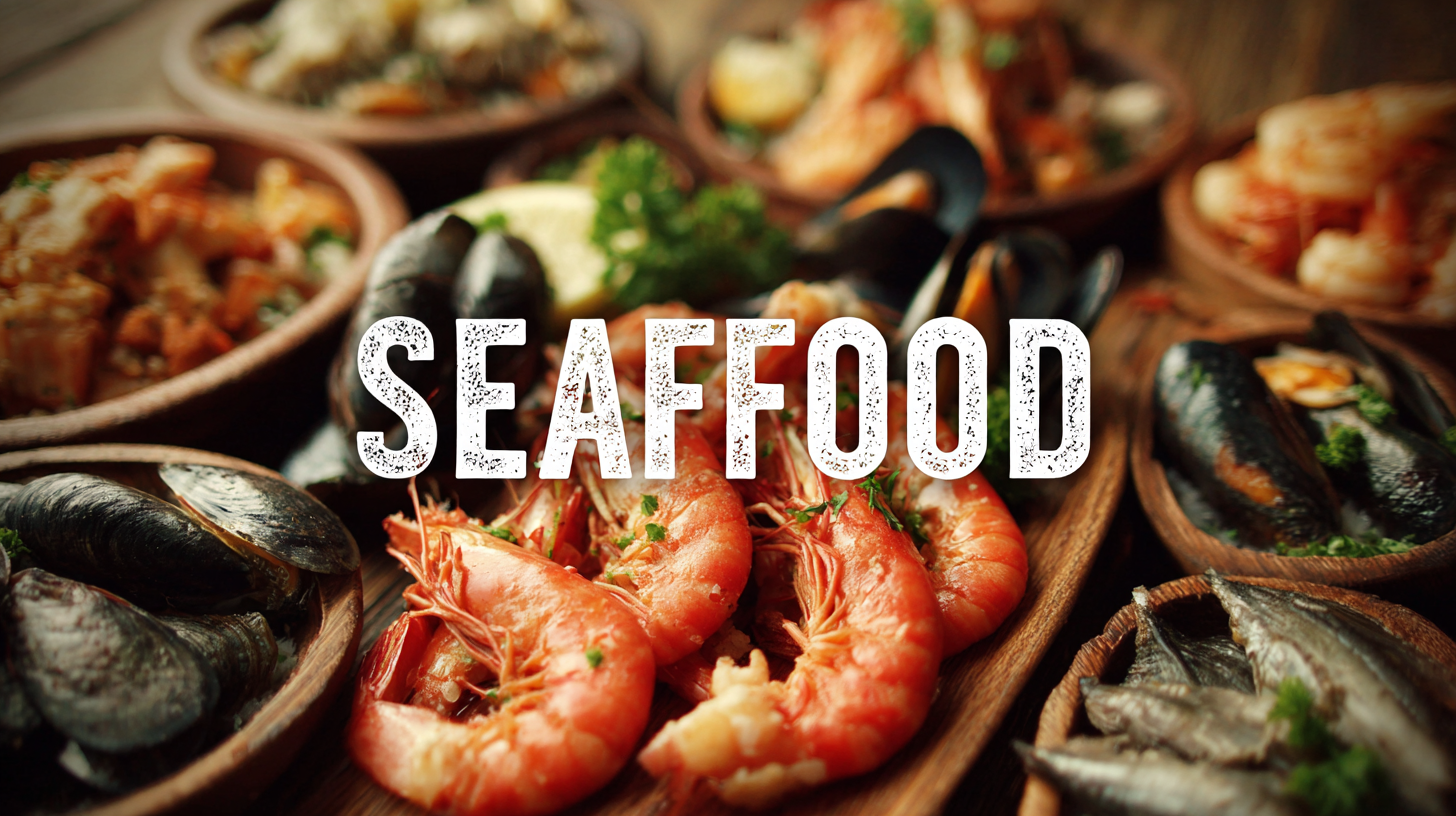Are you a seafood lover, or perhaps someone looking to expand your culinary horizons? Welcome to the "Ultimate Guide to Discovering the Best Seafood Food for Every Palate," where we explore the ocean's bounty and help you navigate its diverse flavors and textures. Seafood food is not just about fish and shellfish; it's a vibrant world that caters to every taste preference, from the mildest white fish to the boldest, spiced dishes. In this guide, we’ll provide you with essential tips for selecting, preparing, and enjoying seafood that suits your unique palate. Whether you’re a seasoned seafood connoisseur or a curious newcomer, our insights will ensure that your next seafood experience is nothing short of extraordinary. Dive in and discover how to make the most of your seafood food journey!

When exploring the vast world of seafood, understanding import and export certifications becomes crucial for ensuring quality and safety. Seafood products are subjected to rigorous standards and regulations that vary from country to country. Certifications like the Marine Stewardship Council (MSC) and the Aquaculture Stewardship Council (ASC) provide assurance that seafood is sourced sustainably and meets specific environmental and social criteria. For consumers, looking for these certifications on packaging not only guarantees adherence to safety standards but also promotes responsible fishing practices.

Import and export certifications serve as a bridge between seafood producers and consumers, facilitating international trade while upholding food safety regulations. In the U.S., for instance, the Food and Drug Administration (FDA) and National Oceanic and Atmospheric Administration (NOAA) enforce stringent guidelines for seafood imports, ensuring that products are safe for consumption.
Similarly, exporters must adhere to the standards set by importing countries, which can include health inspections, documentation of sourcing, and traceability measures. By understanding these certifications, seafood enthusiasts can make more informed choices, supporting sustainable practices while enjoying diverse and delicious seafood options.
Understanding seafood terminology is crucial for both novice and experienced consumers seeking to explore the diverse world of seafood. When shopping for fish or shellfish, it’s important to know terms like “wild-caught” versus “farm-raised.” Wild-caught seafood typically offers richer flavors and a more sustainable choice, while farm-raised options can provide a consistent supply and lower prices. Familiarizing yourself with these distinctions can significantly enhance your purchasing decisions.
Another essential term is “sustainability.” Seafood labeled as sustainable is harvested in ways that maintain fish populations and the health of marine ecosystems. Look for certifications from organizations like the Marine Stewardship Council (MSC) or the Aquaculture Stewardship Council (ASC) to ensure your choices support responsible fishing practices. Additionally, be aware of the freshness indicators such as “flash-frozen” or “fresh,” which relate to how the seafood was processed and stored post-catch. With a solid grasp of these key terms, you'll feel more confident navigating menus and markets, allowing you to select the best seafood that suits your palate.
| Seafood Type | Flavor Profile | Best Cooking Methods | Common Pairings |
|---|---|---|---|
| Salmon | Rich, fatty, slightly sweet | Grilling, baking, broiling | Lemon, dill, garlic |
| Shrimp | Sweet, tender, slightly briny | Sautéing, boiling, grilling | Citrus, cocktail sauce, garlic |
| Tuna | Meaty, rich, slightly gamey | Grilling, searing, raw (sushi) | Soy sauce, wasabi, avocado |
| Cod | Mild, flaky, slightly sweet | Baking, frying, grilling | Lemon, tartar sauce, herbs |
| Clams | Briny, slightly sweet, chewy | Steaming, baking, grilling | Garlic, white wine, herbs |
When it comes to enjoying seafood, the key lies in identifying quality options that cater to diverse palates. One hallmark of fresh seafood is its smell; good seafood should have a mild aroma reminiscent of the ocean, free from any overpowering fishy scents. When purchasing, look for clarity in the eyes of fish, moist flesh that springs back when pressed, and vibrant, undull colors. These visual and sensory cues can significantly enhance your overall dining experience.

Additionally, it’s important to consider the sourcing of your seafood. Seafood caught sustainably not only ensures better flavor but also promotes ocean health. Ask your fishmonger about the origin of the catch and whether it adheres to responsible fishing practices. For those with sensitive taste buds, experimenting with cooking methods can also play a crucial role—grilling, poaching, or steaming can elevate the natural flavors and suit different preferences. By honing in on these identification tips, seafood lovers can indulge in exquisite dishes that truly satisfy every palate.
Navigating the complex regulations of the seafood industry is crucial for both consumers and producers. Certification plays a vital role in ensuring that seafood products meet safety standards and sustainability practices. According to a 2021 report by the Marine Stewardship Council, over 14% of global marine catches are certified sustainable, demonstrating a significant increase in industry compliance with environmental regulations. This certification not only builds consumer trust but also promotes ethical fishing practices that help preserve ocean ecosystems.
Moreover, the Global Sustainable Seafood Initiative (GSSI) reported that 64% of seafood buyers prioritize certified products when sourcing, reflecting a growing demand for transparency within the market. As consumers become increasingly discerning, they seek assurance that the seafood they purchase is not only safe but also responsibly sourced. Producers who navigate certification processes effectively can gain a competitive edge, appealing to eco-conscious consumers and enhancing brand loyalty.
With regulations evolving, staying informed about certification standards is essential for anyone involved in the seafood supply chain. Adhering to recognized certifications not only aligns with regulatory requirements but also contributes to better industry practices, ensuring that seafood remains a sustainable choice for all palates.
When it comes to choosing the best seafood, understanding your specific needs is essential. Start by considering the type of meal you plan to prepare. For instance, delicate fish like sole or flounder are perfect for pan-frying and will appeal to those who prefer a lighter taste. On the other hand, heartier options like salmon or tuna are excellent for grilling, offering a bolder flavor that can satisfy those craving something more substantial.
Next, think about the cooking method you will use. If you’re grilling or baking, consider fatty fish that will hold up well under heat, such as mackerel or trout. If you prefer steaming or poaching, leaner varieties like cod or haddock can maintain their texture beautifully.
Don't forget to check for freshness—look for fish with bright, clear eyes, shiny scales, and a mild ocean smell. Finally, always consider sustainability; sourcing seafood from responsible fisheries not only supports the environment but often results in better quality seafood.
